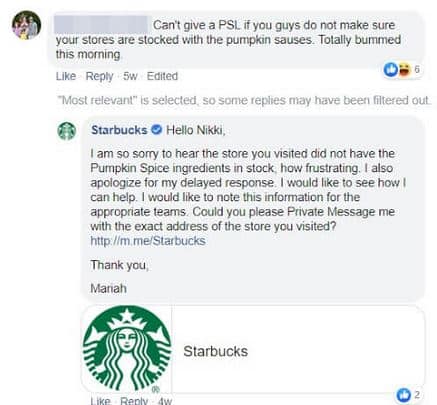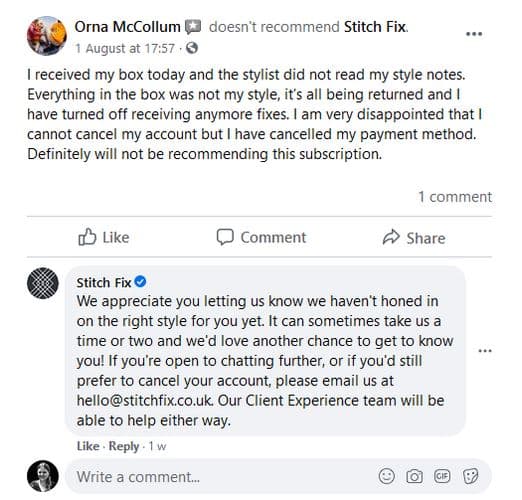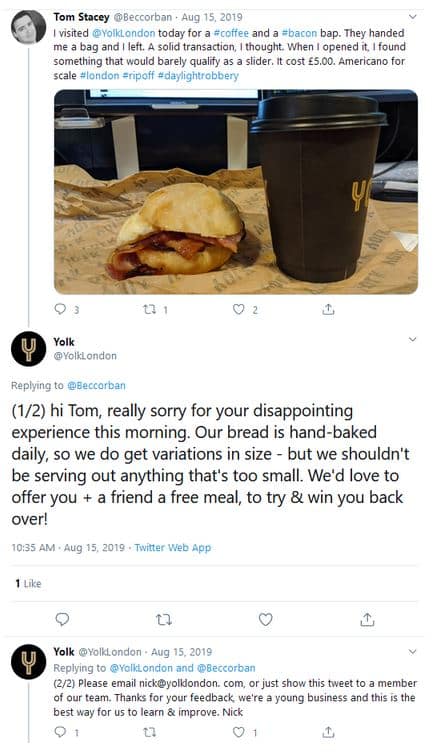
Bench Accounting / UnsplashIf you run a business that is active on social media, it’s almost inevitable that you’ll receive a negative comment sooner or later. Whether or not you feel the negativity is justified, you’ll need a plan in place to respond.
Many brands completely ignoring negative comments — this is a big mistake. It signals disrespect to the customer, which negatively impacts others’ perception of your brand, too.
The only response worse than no response is to delete negative comments. Deleting a comment from a disgruntled customer often fans the flames and makes the situation worse. There are exceptions, such as if the comment is offensive, profanity-laden, violent, or threatening. But in most cases, you should resist the temptation to delete.
Every now and then, you’ll see amazing brand responses to negative social media comments. Let’s look at a few of them and consider what we can learn from their examples.
Show Empathy
According to Psychology Today, empathy is defined as “the ability to recognize, understand, and share the thoughts and feelings of another person.” People have a basic need to be heard and understood. Therefore, when you receive a complaint, it’s essential to empathize with how the customer is feeling.
Empathy is one of the simplest and most effective ways to diffuse anger, frustration, or annoyance so that you can find a suitable solution. Here’s a fantastic example from Starbucks:

It’s worth mentioning that empathy is not only reserved for major problems. It can also go a long way with issues that may seem relatively trivial, such as the above customer who couldn’t get her favorite drink due to an item being out of stock.
Notice how the customer service representative validates the customer’s feelings by saying “how frustrating” before explaining how she intends to address the problem. The representative signing off by name also makes the exchange feel more personal.
An empathic, personalized response shows that the brand cares about customers, and in many cases, that is all that’s needed to get them back on your side.
Acknowledge the Error
We’re all human, and no business can expect to get things right every single time. What matters is not perfection but owning up to it when you make a mistake.
Stitch Fix is a clothing subscription delivery service that makes a point of responding to every review on social media, positive or negative. This customer was unhappy with the content of her delivery and felt that the stylist had not understood her requirements:

Notice the personalized language in the response “we’d love another chance to get to know you.” This type of reply shows care and the willingness to adapt to get it right next time. Acknowledging that you failed to live up to expectations on this occasion humanizes your brand and goes a long way toward defusing the customer’s annoyance.
In addition, thanking the customer for bringing the issue to the comdpany’s attention shows respect. Customer feedback is valuable, even when it isn’t positive. By valuing your customers’ opinions, you increase the odds that they will give you another chance.
Finally, offering the customer two options (fixing the problem or canceling the account) puts Stitch Fix back in control.
Stand by Your Values
You don’t have to agree with negative comments, and there are occasions when you shouldn’t.
A UK Post Office employee known simply as Courtney went viral in June this year with her eviscerating responses to bigoted comments on Twitter. The organization ran a Pride Month campaign, showcasing the achievements of its LGBTQ+ staff. Among the many positive responses were a handful of negative and even hateful ones.
The social media team, led by Courtney, pulled no punches in standing up for colleagues and equal rights:

Values are at the heart of your brand identity. Whether you’re speaking up for LGBTQ rights, gender equality, environmental issues, or something else entirely, don’t be afraid to hold your ground when it matters.
The Post Office’s responses during its Pride Month campaign is a perfect example of how to push back against hateful comments without becoming aggressive in return.
Don’t Take Yourself Too Seriously
People love pointing out brands’ mistakes on their social media accounts. If you accidentally missed a typo, made a spelling mistake, or forgot to correct a grammatical error in a post, you can guarantee that your followers will be quick to gleefully point it out.
Indian fashion company Allen Solly mistakenly announced on a billboard that a new product was “comming soon [sic].” A follower snapped a picture and put it on Twitter, pointing out the spelling mistake. The brand’s response was swift and hilarious:

The company owned up to its mistake without making too big a deal of an ultimately harmless typo while adding a dash of humor into the mix. By implying the old-fashioned school punishment of writing lines, the brand makes fun of itself and gives its audience a smile. Notice the use of the winking-face emoji to indicate a shared joke.
Although you must take larger issues seriously, small mistakes are often best handled with playful irreverence. Showing that you don’t take yourself overly seriously can endear you to your customer base. A simple “oops, our bad, thanks for letting us know” would have been fine, but nowhere near as memorable.
You can avoid getting called out for embarrassing spelling errors by using a spelling and grammar checker before you hit “publish.” But if you do let one slip through the net, following Allen Solly’s example will keep you in your customers’ good books.
Give a Gesture of Goodwill
Depending on what your business does, it won’t always be possible or appropriate to respond to negative feedback by giving the customer something for free. But if you are able to, a gesture of goodwill achieves two things:
- It repairs the relationship with customers by showing that you care about their feedback and experience.
- A freebie makes it more likely that they will return, giving you the opportunity to show that their bad experience was a one-off and that you can do better.
Check out this example from London restaurant Yolk:

Yolk does four things in this short exchange: apologizes, explains how the problem happened, offers a freebie as a gesture of goodwill, and shows that the company values the feedback.
If you want a disgruntled customer to give you a second chance, the best way to get them back through your doors is to give them an incentive. In the long run, the cost of keeping a customer happy through a gesture of goodwill is far outweighed by the lifetime value of the customer.
You might be wondering if you should make these offers privately to prevent an influx of complaints from people looking for freebies. It’s true that a very small number of unscrupulous people will make bogus complaints just to get free stuff, but these people are in the minority.
By publicly offering a gesture of goodwill in the face of a complaint, you show your customers that you really care about offering an amazing experience, and that is worth far more than the occasional cost of giving something away.
Handling Negative Social Media Comments Like a Pro
There’s definitely an art to handling negative social media comments in the right way. It’s a difficult balancing act because there is no one-size-fits-all approach. Different brands, customer bases, and problems will all require different responses.
Whatever methods of handling negative comments you choose, make sure your brand’s voice and values are front and center. How do you want your customers to perceive you? Does the response you’re about to give enhance that desired perception? If not, approach the negative comment in a different way.
Nobody enjoys getting negative comments on social media or anywhere else, but they are an occasional part of doing business. Presumably you want your brand to be seen as honest, trustworthy, and customer-focused. Ignoring or deleting negative comments will have the opposite effect, so resist the temptation no matter how strong it is.
With inspiration from these examples, a strong sense of your brand’s voice and values, and a dash of creativity, you’ll soon be handling those negative comments like a pro.
